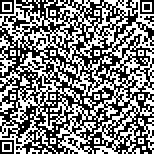本文已被:浏览 1672次 下载 7022次
投稿时间:2009-04-26 修订日期:2010-03-05
投稿时间:2009-04-26 修订日期:2010-03-05
中文摘要: 利用江西省2002—2007年的地面观测和雷达资料进行统计分析,研究地面降雹与TBSS之间的对应关系,并且对TBSS在大冰雹预警方面的应用进行了探讨。结果表明,TBSS作为≥19 mm的大冰雹的预警指标具有很好的应用效果。其准确警报率(POD)为0.818,错误警报率(FAR)为0.182,而临界成功指数(CSI)达0.692。在多普勒天气雷达产品中,TBSS是一个沿着雷达径向从强风暴核区向外延伸的、具有低的反射率因子值,零或朝向雷达的低速度值和高速度谱宽值的区域。它一般首先出现在中高层(4~9 km),然后逐渐降低,最低可达1.0 km。利用TBSS预报大冰雹的时间提前量最大达到77分钟。实际观测到的TBSS特征存在各种不同的形态,而且不同距离处观测TBSS特征的最佳仰角存在很大差异。总之TBSS特征可以作为大冰雹的有效判据。
中文关键词: 雷达, 大冰雹, TBSS特征, 预警
Abstract:The 2002-2007 radar data and observations from Jiangxi were examined statistically to determine the correspondence between surface hail and the three body scatter spike (TBSS). We have discussed its operational use as a large hail (≥19 mm) warning criterion in Jiangxi. The result indicated that TBSS as large hail indicator is of very good application significance. The probability of detection (POD) using the TBSS is 0.818. The false alarm ratio (FAR) is 0.182 for large hail. And the critical success index (CSI) is 0.692. As in the previous studies, the TBSS is an echo region aligned radially downrange from an intense reflectivity core and is usually characterized by low reflectivity and near zero or weak inbound velocities. Spectrum widths are very broad and often noise like. It is found almost exclusively aloft in the mid levels (4-9 km) and then to descend with hail descent. A distinct advantage of the TBSS as a warning criterion is a lead time of up to 77 minutes. The TBSS has various appearances and occurs at different elevation with the distance changing. In brief, the TBSS is an effective large hail criterion.
文章编号: 中图分类号: 文献标志码:
基金项目:中国气象局气象新技术推广面上项目(编号:CMATG2008M42)
| Author Name | Affiliation |
| GUO Yan | Jiangxi Provincial Meteorological Observatory, Nanchang 330046 |
引用文本:
郭艳,2010.大冰雹指标TBSS在江西的应用研究[J].气象,36(8):40-46.
GUO Yan,2010.TBSS as Large Hail Indicator in Jiangxi Province[J].Meteor Mon,36(8):40-46.
郭艳,2010.大冰雹指标TBSS在江西的应用研究[J].气象,36(8):40-46.
GUO Yan,2010.TBSS as Large Hail Indicator in Jiangxi Province[J].Meteor Mon,36(8):40-46.

